Bluecrop Blueberry Plant
Description
A great blueberry plant for colder climates. Produces big clusters of large, all-purpose berries — perfect in salads or pies, or served with cream. Developed in 1934, introduced in 1941. Cold-hardy. Ripens in July. Self-pollinating, but will yield larger crops if pollinated with Jersey or Earliblue.
Survival Guaranteed!


Since 1816, Stark Bro’s has promised to provide customers with the very best fruit trees and plants. It’s just that simple. If your trees or plants do not survive, please let us know within one year of delivery. We will send you a free one-time replacement, with a nominal shipping fee of $9.99. If the item in question is not available, we can issue a one-time credit to your account equaling the original product purchase price or issue you a refund. Read more about our warranty policy.
Characteristics
| Bloom Color | Pink, White |
| Bloom Time | Mid |
| Chill Hours | 800 - 1000 |
| Fruit Color | Blue |
| Fruit Size | Large |
| Hardiness Zone Range | 4 - 8 |
| Pollination | Self-Pollinating |
| Ripens/Harvest | July |
| Shade/Sun | Full Sun |
| Soil Composition | Loamy |
| Soil Moisture | Well Drained |
| Soil pH Level | 4.5 - 5.5 |
| Taste | Mild, Sweet |
| Texture | Firm |
| Years to Bear | 2 - 3 |
Size & Spacing
Mature Size
Recommended Spacing
Zone Compatibility
Pollination
Bundle & Save!
We've combined this item with others that compliment it into money-saving assortments that make shopping easy!
Tools & Supplies
Planting & Care
Learn all about how to grow blueberry plants in The Growing Guide. An entire section of our website dedicated to your growing success.
Shipping Information
Arrives when it's time to plant
Questions & Answers
First, you should NOT use garden soil in a container. It's far too heavy and the plant will suffocate. A good mix for blueberries is 2 parts potting soil to 1 part Canadian peat, or 1 part potting soil, 1 part shredded pine park and 1 part Canadian peat. If you can mulch with pine needles or pine bark, that is perfect. After 4 weeks, top-dress with slow-release elemental sulfur or Stark Soil Acidifier, according to the package directions.
No. Further, it would be bad if they did. The first season, you should pick off all flower buds. The second season, you should do the same if it was a bare root. It isn't fun, but you will be rewarded with a bumper crop in years 3-8. And pruning is essential, with major renovation pruning every 8-10 years.
Yes, blueberries can be transplanted. Just be sure to keep the roots moist and covered in transport, and replant as quickly as possible.
The Bluecrop Blueberry is self pollinating so it will produce berries by itself.
Our website has a special feature that will help you find the best plants for you to grow in your area. Simply enter your zip code in our Hardiness Zone Finder and as you browse our page, you’ll see a small check mark next to products that are hardy to your growing zone!
https://www.starkbros.com/zone-finder
Yes they do tend to spread.
They are 2 year old plants.
They are approx. 1 year old and will fruit in 2-3 years. They might try to bear fruit sooner but I would give them a good year before letting them fruit so that their roots can get fully established in their new location.
Yes but I would not use a bed more than 8" tall; the roots need to get into native soil below that will for sure stay uniformly moist.
There's no good answer I've found, unfortunately.
That said:
- I find that the 'ground critters' leave my blueberry bushes alone if they're in raised planters. Probably too late for you, but a 36" high planter seems to help a lot.
- I've found that insect netting (such as Agfabric now Gardenport) seems to work reasonably well... particularly the forms that you can tie at the base of the blueberry bush. Yes, the critters can eat through it, but, at least for me, they don't. I suspect they may just be confused enough to not recognize what's on the other side of the fabric.
- I've read that 'cat scat mats' work reasonably well on chipmunks and squirrels. I'm running an experiment this year trying to protect my strawberry beds with mixed results. They seem to slow them down, but don't seem to stop them. Your mileage may vary.
- I'm also experimenting with planting garlic around my strawberries as a 'pest confuser' and 'pest repellent'. It's hard to know for sure if it works, but I've had far less chipmunk pressure since I started growing garlic around my beds. In one strawberry bed that a groundhog used to ravage -- eating all of the leaves in addition to the berries -- there's no damage at all now that it's surrounded by garlic.
The first two suggestions above work really well for me... the last two are still an experiment, but especially the garlic has positive indicators so far. Plus I get a bunch of garlic to eat. ;-)
I planted mine after any danger of frost so I’m not sure if I can help. I have had really good luck with this variety surviving Missouri winters so I’m guessing they are very hardy.

 Options
Options







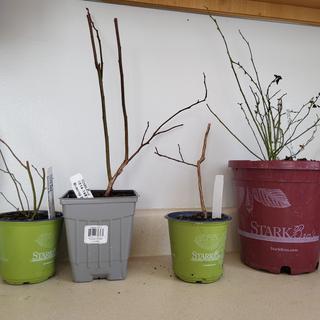
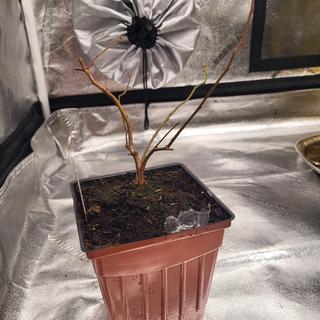
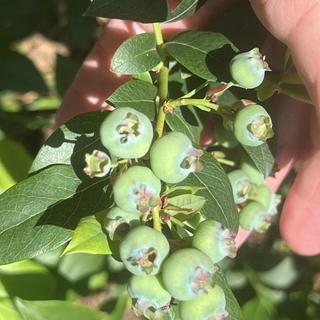
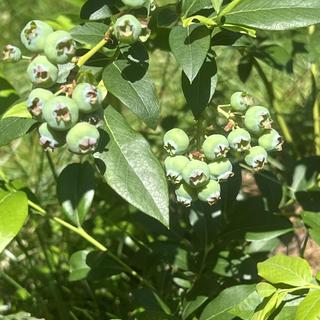
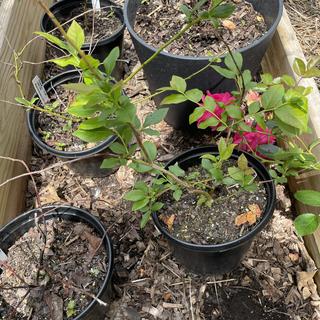
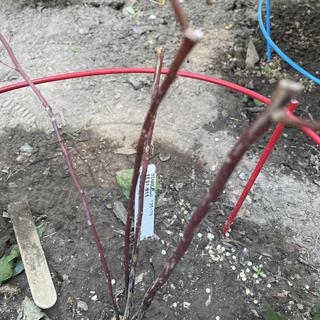
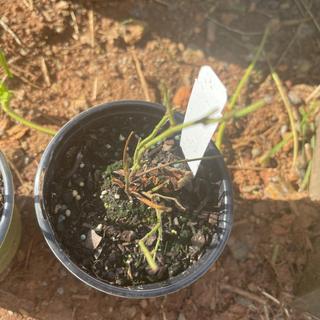
Trying to grow blueberries
I have some already.
I grow these grapes with my dad and i really enjoyed them.
Large variety